How To Choose the Right Mulch for Your Plant
How To Choose the Right Mulch for Your Plant
Generate the aspect you want, and give your plants the nutrients they require, by choosing the most appropriate mulch.
 COMPOST
COMPOST
You can use compost on all the plants in your garden, but it really is best suited to fast-growing, nutrient-hungry plants such as vegetables, fruit trees and flowering annuals. It breaks down in a number of months, increasing the soil’s capability for holding water and nutrients and depending on its source, makes the soil more bountiful. Being dark in colour, compost increases heat absorption, warming the soil, but it also favours the growth of weed seeds.
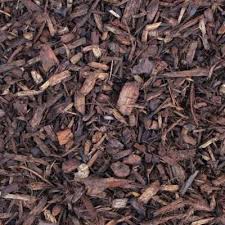 WOODCHIP MULCHES
WOODCHIP MULCHES
Mulch from hardwood trees, such as eucalypts, lasts up to five years; pine or other softwood mulch lasts two to three years. These are very low in nutrients and should not be mixed into the soil surface. Don’t use woodchips fresh, as they can contain high levels of toxins including tannins. Woodchips are best used around trees, shrubs and other long-term plantings, and particle sizes above 20mm last longer and give better water preservation.
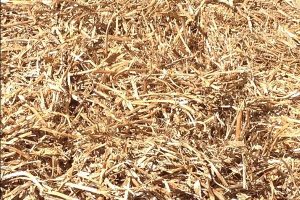 STRAW
STRAW
Made from dried plant stalks left behind after crops, such as oats or peas, have been harvested. Straw breaks down in three to six months, depending on which type of plant it’s made from. If it comes from legumes, such as pea straw, it breaks down more quickly and adds nutrients, particularly nitrogen, to the soil. Straw from cereal crops, such as oats, is lower in nutrients and takes longer to decompose, but all straw mulches build up the soil’s capacity to hold water and nutrients. Straw can be used anywhere in the garden, but is best suited to areas that are maintained regularly, such as vegetable patches. Being light in colour, it tends to keep soil cooler, thus reducing evaporation more effectively than darker mulches.
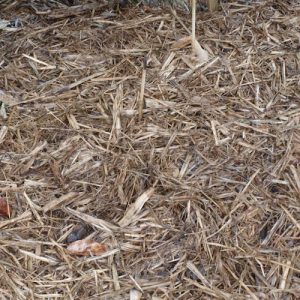 SUGARCANE MULCH
SUGARCANE MULCH
Derived from the dried leaves of the sugarcane plant, left after harvesting, this mulch decays in about six months. It only adds a minor quantity of nutrient to the soil but certainly acts as a conditioner, building water- and nutrient-holding capacity. You can use it on all parts of the garden, but it is best suited to areas that are maintained frequently, such as vegetable patches. It reflects sunlight, keeping the soil cooler and reducing moisture loss.
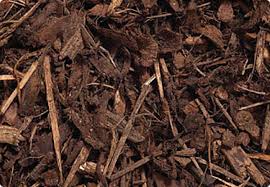 BARK MULCHES
BARK MULCHES
Made from a variety of tree species, with pine bark being the most commonly available, these last for about two years. Barks don’t add any nutrients to the soil and should not be used fresh (as they may contain toxins when newly milled) or mixed into the soil without being composted. They come in various grades, from fine to coarse, and those with larger particles are best for most gardens. You can use them on all plants, but they are best around long-term plantings, such as trees and shrubs. Used on herbaceous plants, such as vegetables, they are likely to become combined into the soil, resulting in ‘nitrogen drawdown’.
 GRAVELS AND PEBBLES
GRAVELS AND PEBBLES
Gravels come from quarrying, while pebbles, which are smoother, are from river beds. Both materials are everlasting features when used as mulches. Particles above 20mm make the best mulch. They add very little or no nutrients, but don’t draw any out of the soil. Various colours are available, and the lighter colours reflect sunlight, reducing water loss in warmer climates. Gravels and pebbles are best used for long-term plantings, such as trees and shrubs, where low-maintenance, permanent mulch is needed.
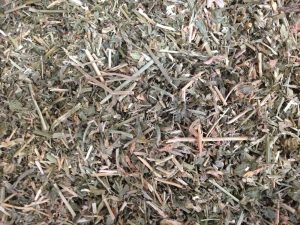 LUCERNE
LUCERNE
Lucerne hay and pellets are arguably the best mulches, as the lucerne is harvested when the plant is at its maximum level of nutrient content. While it fertilises your soil considerably, it also adds a rich layer of humus that builds soil structure and nutrient- and water-holding capacity. It breaks down in several months. Use lucerne on fruit and vegetable gardens, where it gives maximum benefit.
 SCORIA
SCORIA
This is lightweight, porous, volcanic rock, which lasts indefinitely as mulch and is much easier to handle than gravels or pebbles. It adds very small amounts of mineral nutrients to the soil, so is definitely not a drain on soil fertility. Virtually all water that falls on scoria goes straight through to the soil, whereas organic mulches tend to absorb some of the water as it passes through. Scoria is best used around long-term plantings, such as trees and shrubs, where a low-maintenance, permanent mulch is needed.
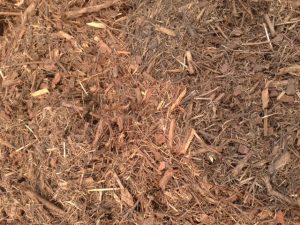 TEA-TREE MULCH
TEA-TREE MULCH
Created from the residue left after processing tea tree (Melaleuca alternifolia) for its medicinal oil, this mulch lasts for about two years. As it’s very low in nutrients, it definitely should not be mixed into the soil surface. It gradually decomposes, adding nutrient and water holding capacity to your soil. Tea-tree mulch can be used on all garden plants, but is best utilised around long-term plantings, such as trees and shrubs, where its dark colour helps to keep the soil warm through winter.
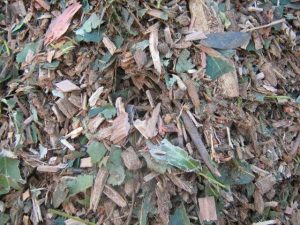 TREE AND SHRUB LOPPING RESIDUE
TREE AND SHRUB LOPPING RESIDUE
Pruning in urban areas, particularly cutting back vegetation under power lines, produces this type of mulch. This means it comes from a wide range of plant species, making it somewhat flexible in composition. It usually lasts for about two and a half years in the garden, adding small amounts of nutrients and soil-conditioning humus. Don’t ever use these pruning’s fresh, in case they contain toxins. Tree and shrub lopping residue can be used to mulch all garden plants, but is best used around long-term plantings, such as trees and shrubs.
All of the above mentioned Mulches are available from various garden retailers, landscape supply shops, tree-lopping companies and stock feed suppliers or just call Jim’s Mowing on 0800 454 654 or book online for a free quote, they will be happy to help.


